Tommaso Fiorilli lenses The Walking Dead: Daryl Dixon
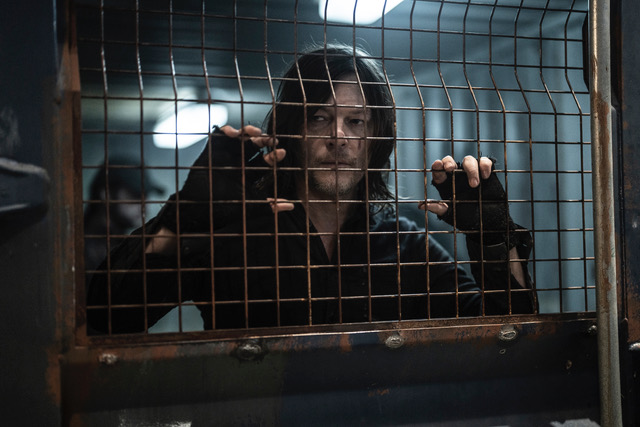
First aired in September on the American network AMC, The Walking Dead: Daryl Dixon is the French spin off of the successful show, The Walking Dead. It is the odyssey of Daryl Dixon (interpreted by the charismatic Norman Reedus) who mysteriously lands ona French beach and crosses a disrupted France ten years after the apocalypse, when most of the living population have turned into the walking dead. Populated by walkersand survivors, Dixon, in the pursuit of a way home, will meet new enemies, new friends and perhaps a new side of himself in the process. As for the TWD motto: “Fight the dead fear the living.” Four episodes of Daryl Dixon were captured by DP Tommaso Fiorilli SBC.
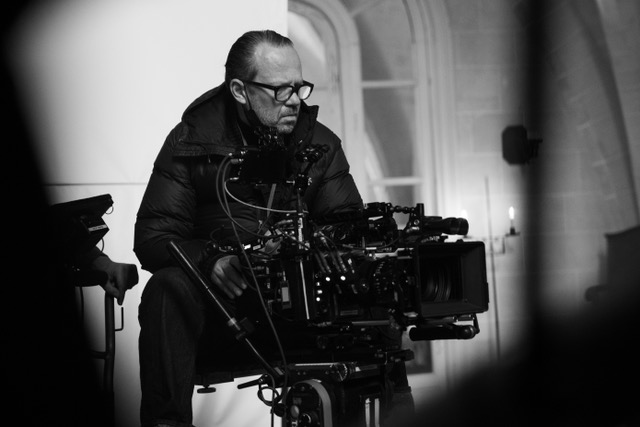
Fiorilli was born and raised in Italy, where he began working as an assistant photographer in the late 80’s. “At the time they were asking photographers to do music videos,” says Fiorilli. “That’s how I met cinematographer Luca Bigazzi, who now frequently works with Paolo Sorrentino. He was a young cinematographer and I was impressed by his way of working on set. I decided that’s what I wanted to do. I was 22 at the time. I left everything and went to Belgium, worked for one year as a spark and later got into the IAD film school. I quickly started working as a DOP, first on short movies and then features. I moved to Paris 15 years ago, as I was working there more than in Brussels.”
Fiorilli’s early influences were cinematographers such as Vittorio Storaro and Robby Muller, although his influences have changed with time. “What’s interesting for me is what you take from people,” he says. “Impressions change over time and you see different stuff. For example, Roger Deakins was an editor before a cinematographer. When I watch his work, I can immediately see his footprint, there is an economy of shots, there are very few shots and the camera is always in the perfect spot, it’sstorytelling, not illustration. He sets up where the action is going to happen. It’s very simple and very clear. There is something about that that’s very interesting for me. I am a big fan of Robbie Ryan. I like the intuitiveness of his camera work and the freedom he always brings his touch to the movies he works on. I also really like Darius Khondji. He’s very good with colours. I’ve met him a few times and he’s so great with communicating his ideas to the crew, which in our trade is enormous. It’s like 80% communication and 20% practical work. I think this could be one of the most valuable things to teach in film school.”
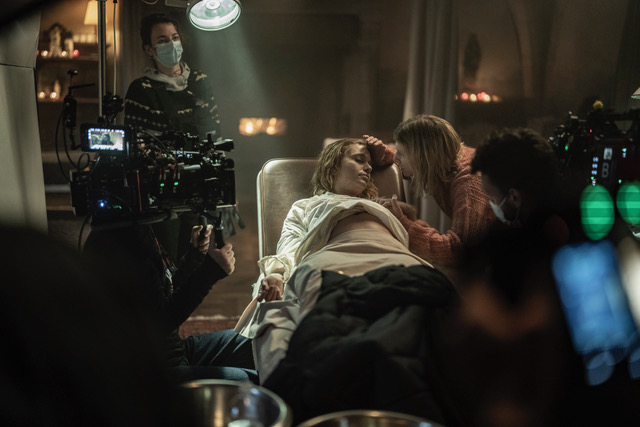
“As a cinematographer you are very dependent on the other departments: the art department, the costumes, the make-up, locations production, cast and directors,” Fiorilliadds. “You have to work with everybody, explain your ideas, listen to their input and take them on board. When the production contacted me for the first time for Daryl Dixon,I was shooting a feature in India. They were very mysterious; they didn’t even say the name of the project until I signed all sorts of NDAs (non-disclosure agreement). I had a talk with producers and they introduced me to Dan Percival the director who had seen my work and wanted to meet me. We had a zoom call; we talked for an hour and we clicked. We talked about Todd Hido, his desolated landscapes and the density and gloominess of his work. Percival comes from a documentary career. He likes to give the actors the freedom to move and let the camera adapt to them. I love this. That ‘s always been my primary way to work. There was a will from the network to have “something different” from the franchise. Which was very pleasant, we had to imagine a different visual universe for Daryl Dixon. The main visual direction was “Scope and Intimacy” Landscape and emotion. That led every further conversation.”
In terms of his approach to lighting, Fiorilli likes to think ahead. “I work very intuitively, so I take the script and I take a bit of time to read it. I just think about the scenes and images come to my mind. So, I start having ideas and look for visuals, such as paintings or photography that can convey them. Then, I do a little mood board that I use to communicate with the crew. I like to be involved very early with location scouting.
The way I approach the lighting of a scene, is that I tend to light a place rather than people. I try to create an atmosphere where the actors came move freely, that’s very important to me. It creates a very organic lighting and then I let the actors find their place into it. I like to work with accidents of light. Sometimes, I will modify things, to suit a particular shot. I am very interested in architecture and the way light inhabit space.”
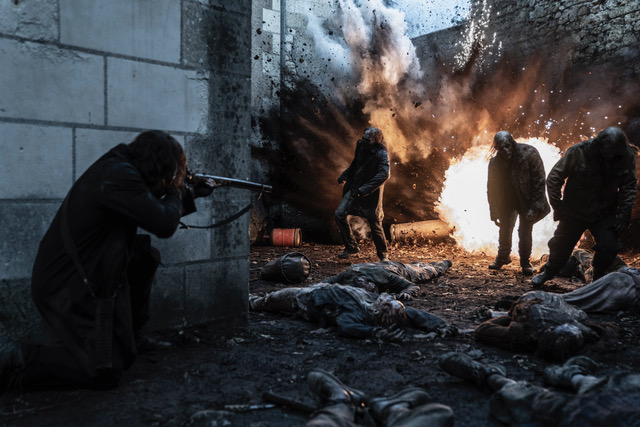
“The show is very visual, for example in the first minutes, we just see Daryl walking around without saying a word,” Fiorilli continues. “This idea that the image should tell the story was really present from the beginning. We naturally went with short lenses so we could be close to the actors and to be able to see a lot of the scenery behind them. We were constantly talking about depth of the image, having several layers of locations in front of us. We had to transform all of the locations we filmed in. There was a huge intervention of art department and VFX every time we were shooting somewhere. We tried to give as much richness to the image as possible. That was one of our decisions from the beginning and I think we really see that throughout the show.”
Before the shoot, Fiorilli had the chance to test the new Alexa 35. “It was one of the first times it was being used in France and I got to run tests. I really liked it and I think it really helped us,” explains Fiorilli. “The dynamic range is extended compared to the other Alexa’s. I use strong backlight most of the time. The camera allows me to get the information back from the highlights and the shadows, making an organic image without having to light too much. That gave me a lot of freedom. I’ve being using that camera since. We shot with anamorphic lenses shooting between T2.8 and T4. And the highest sensitivity of the camera really helped us. In night exteriors I was often at iso3200 and had no noise or contrast problems. I also love the color science of it. In color grading,the image is easy to work with and it takes me where I want to go effortlessly.”
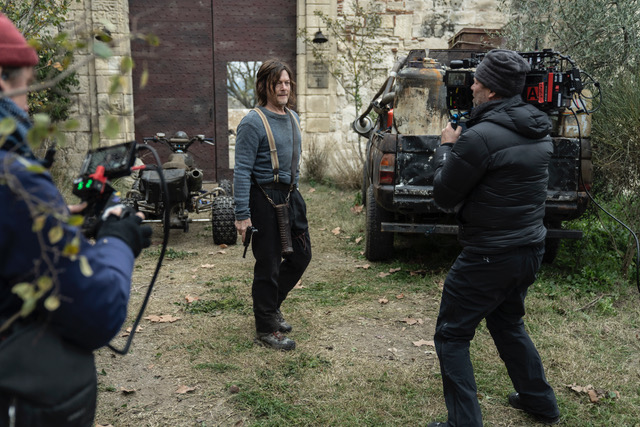
Fiorilli used Zeiss anamorphic lenses. “I was pretty happy with them. We had some restrictions because of all of the VFX we had to do on the show. The VFX company needed clean lenses that didn’t have too much distortion or uncontrollable flare. They also needed a lens with Metadata to gather all the focus and stop information. It’s easier for VFX to recreate something that way. I am really happy about the decision to go anamorphic. We tended to use very wide lenses, our “go to” lens was a 28mm, and the lenses were giving us a shallower depth of field enhancing the characters and separating them from the background. With nice organic flares and bokeh. There is also something about the geometry of the lens: the way the perspective is recreated on the sensor. It’s difficult to describe it, but for me it is more natural,” says Fiorilli.
For Fiorilli, working with Norman Reedus was a really great experience. “He has a stunning presence and physicality, something wild and animal,” he says. “There was a lot of handheld in the show and in general I operate it myself. Norman is a sort of lens magnet: when you have him in front of your camera you know exactly where to put yourself, it’s physical not intellectual. It’s a sort of choreography, a dance he does with the camera, or that the camera does with him. On the contrary, Clemence Poesy inspiresa sort of calm, a distance, I think the contrast between those two characters is part of the success of the story. One of the shots I’m most proud of in the show is Clémence Poésy’s character on the metro platform when she sees the metro arriving with all of the zombies on it. Originally, it was a oner. We had very limited hours to shoot the scene between 1 and 4 am. There is some sort of surreal magic in the shot, maybe because ofthe perfect timing with the train, maybe because we over cranked the camera a bit or maybe just the aérial presence of Clémence.”
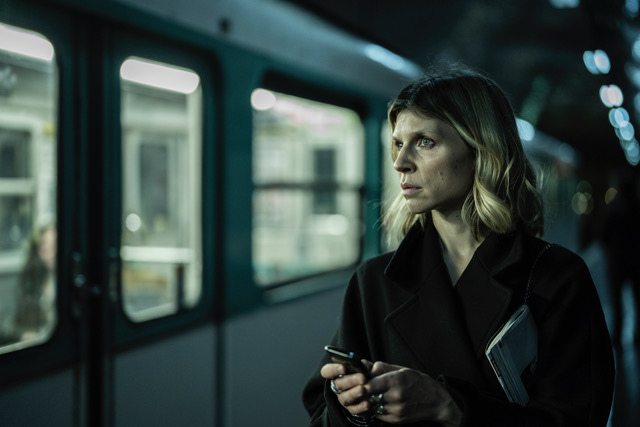
When reading the script, Fiorilli was particularly struck by Clémence Poésy’s character in the flashback sequences. “In The way the show runner David Zebel wrote those flashbacks Scenes, Isabelle (Clemence) is not doing so good: drugs, bad companies, suicide attempts. Although we are living in a pre-apocalypse world. Strangely she seems to be happier in the walking dead world. She has found her path and her purpose,” notes Fiorilli. “In cinematography like with wine pairings you can complement or contrast. I thought painting the contrast was more interesting. In the pre-catastrophe world, she is upset and sad but the world around her is bright and colorful and you have all the lights of Paris. She’s a sad person in a happy world. The colorful and bright environment highlights her sadness. Then, the images are way darker and there is less color and saturation, but she is happier, at peace.”
One of the Leitmotivs of the show is the presence of kids. By law they have a very short time allowed on set and the school sequences were particularly challenging for Fiorilli and his team. “We spent the whole shoot switching between day and night. We were constantly changing and we only had four hours per day with the kids. The scene with the dinner was on location on the fifth floor. For the night scenes the windows had to be blackened and for the day we had to rig big lights on cherry picker. A big thumb up for Gaffer William Dumont and Key grip Damien Auriol,“ Fiorilli details.
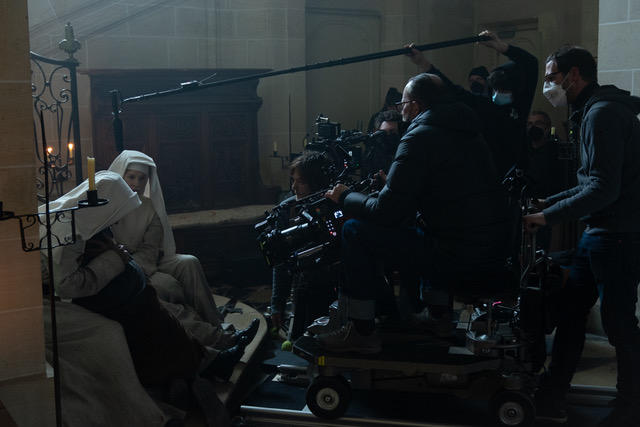
“Daryl Dixon really felt like a big ship to manoeuvre. Huge crews, extensive locations and great challenges. It involved lots of organisation, but it was a very interesting aspect for me. What I really enjoyed was the freedom and trust we received from AMC and David Zebel the creator, David Zabel. We had very positive and constructive feedback. They wanted something different and they trusted us to find our own footprint. Bradford Young, the DP once said in an interview that every crew member is unique. In this world we often forget it. You have to trust that your view is unique and your input and personality is going to show in the show. That’s very important for me. I felt very comfortable doing Daryl Dixon and it was a very nice experience. I really felt like I was ready for it. I have a very good crew here in Paris, young people who are very committed, I thank them deeply,” Fiorilli concludes.
By Oliver Webb
Photographs by Emmanuel Guimier & Stephanie Branchu
THE WALKING DEAD – DARYL DIXON cinematographed by Tommaso Fiorillo (sbc) & directed by Dan Percival (4 epiodes) from SBC on Vimeo.
